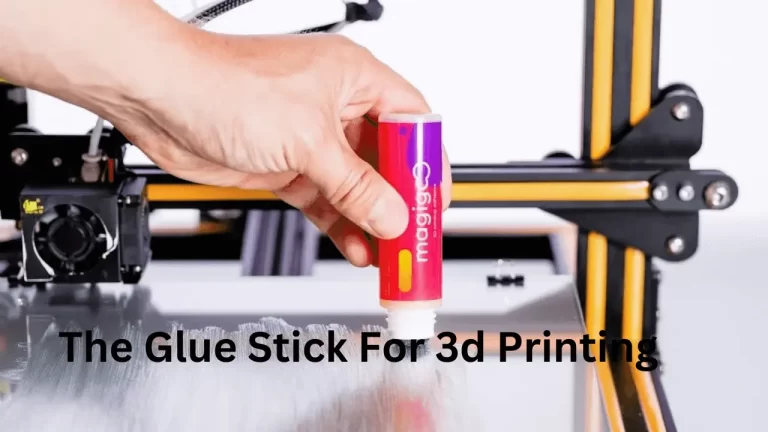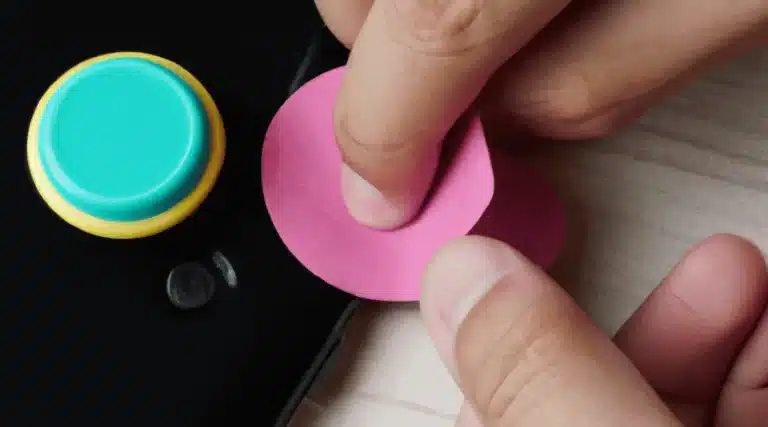Fabric glue is a popular alternative to sewing, and many people wonder whether it can replace the traditional method of stitching fabrics together. Sewing has been used for centuries to create clothing, accessories, and household items, but with the advancement of technology, fabric glue seems like an attractive option for those who want to avoid the tedious process of sewing.
However, there are pros and cons to both methods, and it’s important to understand the differences between them before deciding which one is right for your project. In this article, we will explore whether fabric glue can truly replace sewing.
We will compare the two methods in terms of durability, versatility, ease of use, cost-effectiveness, and more. We will also discuss when it’s appropriate to use fabric glue instead of sewing and provide tips on how to properly use fabric glue for optimal results.
By the end of this article, you’ll have a better understanding of these two techniques and be able to make an informed decision on which one works best for your needs.
Key Takeaways
- Fabric glue can be a suitable alternative to sewing for certain projects, offering benefits such as ease of use, quick drying time, and strong bonds between fabrics.
- While fabric glue may not be suitable for heavy-duty projects or items with significant wear and tear, it can be used on a variety of materials and is particularly useful for delicate or difficult-to-handle fabrics.
- Proper preparation, application, and drying time are crucial for optimal results with fabric glue, and surfaces being bonded must be clean and free of debris for a strong and lasting bond.
- Fabric glue is safe, reliable, and long-lasting, offering emotional benefits such as satisfaction in knowing the finished product will stand up over time, and can be a cost-effective alternative to investing in a sewing machine and related tools.
Understanding Fabric Glue
Fabric glue is a type of adhesive that is designed to bond fabric materials together without the need for sewing. There are several benefits to using fabric glue, including its ease of use, quick drying time, and ability to create a strong bond between fabrics. Additionally, fabric glue can be used on a variety of different materials, including cotton, polyester, and even leather.
However, there are also some limitations to using fabric glue as opposed to sewing. For example, it may not be suitable for heavy-duty projects or items that will undergo significant wear and tear. It’s also important to note that there are different types of fabric glue available on the market – some are meant for temporary bonding while others provide a permanent hold.
When comparing fabric glue and sewing, it’s important to consider the specific needs of your project and weigh the pros and cons of each method before making a decision.
Comparing Fabric Glue and Sewing
When it comes to bonding fabrics, there are two main methods:
- Fabric glue
- Sewing
One of the main factors to consider when comparing these two methods is their strength and durability. Additionally, time and effort required for each method as well as cost are also important considerations.
A detailed analysis of these key points will help individuals determine which method is best suited for their specific needs.
Strength and Durability
The adhesive strength of fabric glue has been found to be comparable to that of traditional sewing methods, particularly when used on non-stretch fabrics. Fabric glue has strong adhesive properties that can effectively bond two pieces of fabric together, resulting in a durable and long-lasting hold.
Additionally, fabric glue is less likely to fray or tear the edges of the fabric as compared to sewing, which may weaken the overall structure of the garment over time. However, it is important to note that the durability of fabric glue is highly dependent on the quality and type of glue used, as well as proper application and care.
In certain cases such as high-stress areas or stretch fabrics, sewing may still be necessary for optimal strength and longevity. Moving forward into the next section about ‘time and effort’, it is important to consider both factors when deciding between using fabric glue or traditional sewing methods for a particular project.
Time and Effort
Optimizing the use of time and effort is a crucial factor to consider when choosing between different methods of fabric construction. Fabric glue can be an efficient and convenient alternative to sewing, as it requires less preparation and skill than traditional stitching. However, it is important to note that using fabric glue may not always result in the same level of durability as sewing, especially in high-stress areas or with certain fabrics. To illustrate this point, consider the following table:
| Method | Preparation Time | Construction Time | Total Time |
|---|---|---|---|
| Sewing | High | Medium-High | High |
| Fabric Glue | Low | Low | Low |
As shown above, fabric glue may save time in terms of preparation and construction, but the total time spent may still be lower for sewing if durability is a concern. Additionally, while fabric glue can be a more convenient option for small repairs or temporary projects, investing in a sewing machine may eventually lead to cost savings over repeatedly purchasing fabric glue. In summary, while efficiency and convenience are important factors to consider when choosing between sewing and fabric glue, cost should also be taken into account in the long term.
Cost
Cost is a significant consideration in choosing between various methods of fabric construction, as it involves evaluating the long-term financial implications of investing in equipment and materials.
When considering whether fabric glue can replace sewing, cost is an important factor to consider.
Fabric glue can be cheaper than investing in a sewing machine and related tools such as needles, thread, bobbins, and scissors. However, the availability and accessibility of fabric glue may vary depending on location.
While it may be easy to find at craft stores or online retailers, it may not be readily available in rural areas or smaller towns.
Additionally, the pros and cons of using fabric glue versus sewing should also be weighed carefully when considering cost.
Fabric glue may be faster and easier for small projects or repairs but may not hold up well over time with heavy use or washing.
Ultimately, when deciding whether to use fabric glue instead of sewing, considerations beyond just cost should also be taken into account such as project size and type.
When to Use Fabric Glue
Fabric glue can be a convenient alternative to sewing in situations where the fabric is delicate or difficult to handle. No sew alternatives are becoming increasingly popular due to their ease of use and cost-effectiveness. Adhesive vs. stitching is a debate that has been ongoing among crafters for years, but ultimately it comes down to personal preference and the specific project at hand. There are several instances when fabric glue may be preferable over traditional sewing methods, including when working with sheer fabrics, sequins, beads, or other embellishments that could be damaged by needles and thread. Additionally, fabric glue can create a clean and seamless finish without any visible stitches. However, it should be noted that fabric glue may not hold up as well over time compared to stitching and may not be suitable for projects that require frequent washing or heavy use. When deciding whether to use fabric glue or sewing for a particular project, consider the type of material being used, the durability required for the finished product, and personal skill level. In the next section, we will discuss how to use fabric glue effectively for optimal results.
How to Use Fabric Glue
When using fabric glue, there are important steps to follow in order to achieve the best results.
The first step is preparation, which involves cleaning and drying the surfaces that will be joined together.
Secondly, application of the glue should be done carefully and evenly to avoid any bubbles or wrinkles.
Lastly, it is crucial to allow sufficient drying time for the glue to set properly before handling or wearing the fabric item.
By following these steps with precision, one can ensure a strong and durable bond when using fabric glue.
Preparation
Prior to using fabric glue as a substitute for sewing, it is important to carefully prepare the materials and surfaces that will be bonded together. Cutting techniques should be precise in order to ensure that the edges of the fabric are even and straight. It is also essential to take safety measures when handling sharp cutting tools and scissors.
In addition, surfaces that will be bonded must be clean, dry, and free from any dirt or debris. Any loose threads or fibers should also be removed before applying the glue. Proper preparation is crucial in ensuring a strong bond between fabrics without compromising safety and quality.
Moving forward into the application process, it is equally important to have an understanding of how much glue should be used and how long it takes for the bond to set in order to achieve optimal results without damaging the fabrics being bonded together.
Application
One key step in achieving a strong bond between two materials when using fabric glue is ensuring that the surfaces to be bonded are completely clean and free from any debris or loose fibers. This will help to provide an optimal surface for the glue to adhere to, ensuring a secure hold between the materials. Fabric glue can be used in a variety of no-sew projects, making it a popular choice for DIY fashion accessories such as headbands, jewelry, and even clothing alterations. To give you an idea of what types of projects you could tackle with fabric glue, here’s a table featuring some examples:
| Project | Materials Needed | Steps |
|---|---|---|
| Headband | Fabric, Elastic band, Scissors | Cut fabric into strips and tie onto elastic band |
| Tote Bag | Canvas fabric, Iron-on patch, Fabric Glue | Fold and sew edges of canvas fabric together; iron on patch; apply fabric glue where necessary |
| Scarf | Lightweight Fabric (e.g., chiffon), Fray Check liquid , Fabric Glue | Apply fray check liquid around edges of scarf; fold over edges neatly and apply glue with precision |
By following manufacturer instructions carefully and using proper technique during application, one can achieve professional-looking results without having to rely on traditional sewing methods. However, it is important to note that drying time may vary depending on the type of project being completed. With this in mind, let’s explore how long we should expect our projects to take before moving onto the next step – drying time.
Drying Time
The length of time required for a project to dry after applying fabric glue varies depending on the materials and size of the project, which can create feelings of anticipation and excitement as we wait for our creation to fully come together.
To reduce drying time, there are several tips and tricks that can be utilized such as using a hairdryer on low heat or placing the project under a fan. Additionally, choosing the best fabric glue brands can also affect drying time as some brands have quicker drying formulas than others.
It is important to note that while faster drying times may seem desirable, it is crucial not to rush the process as this could result in weaker bonds and ultimately compromise the overall quality and durability of the project.
With proper care and patience during the drying process, fabric glue has shown to be an effective alternative to sewing for various projects.
Tips and Tricks for Using Fabric Glue
To effectively use fabric glue, it is important to first ensure that the surfaces being bonded are clean and free of any oils or debris. This will ensure a strong and lasting bond between the materials. Additionally, it is recommended to test the glue on a small, inconspicuous area before applying it to the entire project. This will allow you to see how the glue reacts with your specific materials and ensure that there are no adverse effects. When using fabric glue for creative projects or DIY fashion, there are several tips and tricks that can help make the process smoother. For example, using a toothpick or cotton swab can help apply small amounts of glue precisely where it’s needed without making a mess. It’s also important to give the glue ample time to dry completely before handling or wearing the item. Lastly, storing your fabric glue in a cool, dry place can help extend its shelf life and maintain its effectiveness over time.
| Column 1 | Column 2 | Column 3 |
|---|---|---|
| Safe | Reliable | Long-lasting |
| Precise | Convenient | Versatile |
| Easy-to-use | Quick-drying | Non-toxic |
| Durable | Affordable | Time-saving |
This table highlights some emotional benefits of using fabric glue for creative projects or DIY fashion. The safe and non-toxic nature of fabric glue evokes feelings of security in users who may be concerned about harsh chemicals in other adhesives. The precise application and quick-drying formula offer convenience for those looking for an efficient way to complete their projects without having to wait long periods of time for drying times or extra tools like sewing machines. The durability and long-lasting hold evoke feelings of satisfaction in knowing that their finished product will stand up over time with frequent wear or use. Overall, these emotional benefits make fabric glue an attractive option for those looking for an easy-to-use, reliable adhesive for their DIY projects.
Conclusion
Fabric glue is a popular alternative to sewing as it offers several benefits. It is easy to use, dries quickly, and can be used on various types of fabrics. Unlike traditional needle and thread, fabric glue eliminates the need for stitching seams or hems. This makes it an ideal choice for those who have limited sewing skills or time constraints.
However, while fabric glue may offer convenience, it cannot completely replace sewing in all situations. Sewing provides a stronger hold and durability compared to fabric glue. Additionally, certain fabrics such as leather or denim may not adhere well with fabric glue and require stitching.
In conclusion, fabric glue can serve as a useful tool in many DIY projects but should not be considered an outright replacement for sewing. Understanding the differences between these two methods allows individuals to decide which one best suits their needs based on the requirements of their project. By following proper techniques and utilizing tips for using fabric glue effectively, individuals can create high-quality projects without having to rely solely on traditional stitching methods.




